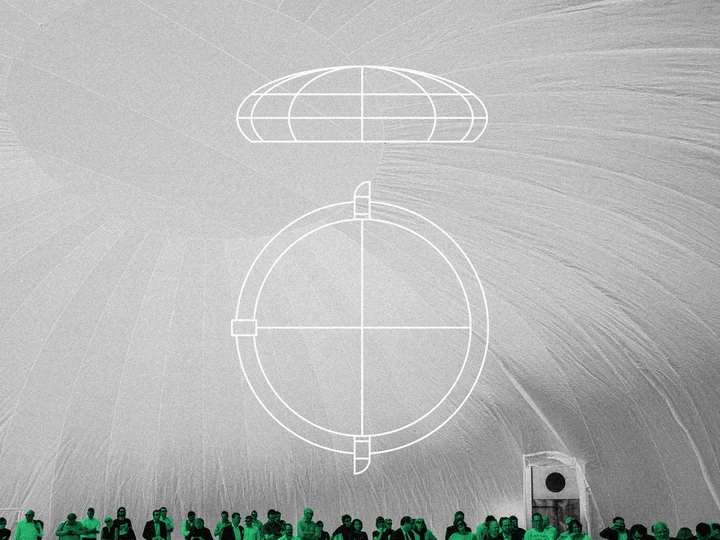SOFT CIVIC INFRASTRUCTURES

Moritz Hahn
Mark Balint is a spatial practitioner and concept developer based in Zürich. With a background in architecture, he explores how space functions as both a physical and symbolic system. His practice spans installations, urban interventions, and collaborative tools that connect spatial design with public dialogue and systemic thinking. Projects such as Raumbeschleuniger, XKompressor, TOSC-X, and Gyrotonics reflect his interest in uncovering latent structures and prototyping new forms of collective experience. As co-founder of GUMBALL.AGENCY, he works across disciplines to develop formats that link imagination, infrastructure, and participation.
Moritz Ruben is an architectural designer and researcher based in Zürich. His practice spans design, curation, writing, photography, and filmmaking. He is co-founder of spaceunited.europe and gumball.agency and is working as a researcher with the Chair for Architecture Heritage and Sustainability at ETH Zurich. His work investigates the emotional, cultural, political, and material dimensions of space—often through temporary, site-specific interventions or publications. His thesis Ideal: Zur ethischen Kritik der Architektur was awarded a BDA Prize, his writing has been published, and his work has been exhibited at institutions such as Werkraum Bregenzerwald, ETH Zürich, and BDA Bayern.
Together, we initiated gumball.agency as a shared practice and collaborative framework that allows us to explore common interests across a variety of disciplines and media. At its core, our work investigates how spatial intelligence—understood as the capacity to structure environments, relationships, and meaning—can be cultivated through public formats, interfaces, and systemic design. We prototype spaces and systems that act as interfaces of civic interaction: installations, exhibitions, speculative objects, typologies, public furniture, or infrastructural civic tools that translate complexity into shared experience.
We approach the city as a site of continuous negotiation—where public space is not a fixed stage but a performative, co-produced infrastructure. Our interest lies in how small-scale, mobile architectural installations or urban interventions can serve as interfaces for collective reflection and the negotiation of immediate urban needs. We see temporary, performative architectures as active tools for building collective urban futures—polylogical, responsive to change, and centered on enhancing the shared human perspective.
Sustainable urbanism flourishes where shared space becomes shared agency. This is where our current experiment begins. We were entrusted with the conceptualisation and further use of an inflatable structure—a 22-meter-wide, 6-meter-high, 300 m² dome with emergency exits and full fire safety certification—and are currently reimagining it as a civic interface. This 'bubble' becomes our speculative, nomadic research site: it could be a performative tool, a shared room, a soft infrastructure for staging temporary overlap in the form of collective gatherings. These events can include listening sessions, shared meals, moderated rituals, exhibitions, theatre, dance, dialogues, or quiet co-presence. The key to keeping this format as open to interpretation as possible is that happenings emerge from the site and its publics, not from a pre-designed program.
Concerning the future of this project, what we're most curious about at the moment is multiplying contexts, uses, and interpretations. We could imagine turning the dials and knobs of this spatial tool and adapting the 'bubble' to fit into different LINA Member programmes—whether as a workshop tool, temporary intervention, or speculative structure—always with the aim of creating space for thoughtful, shared encounters.